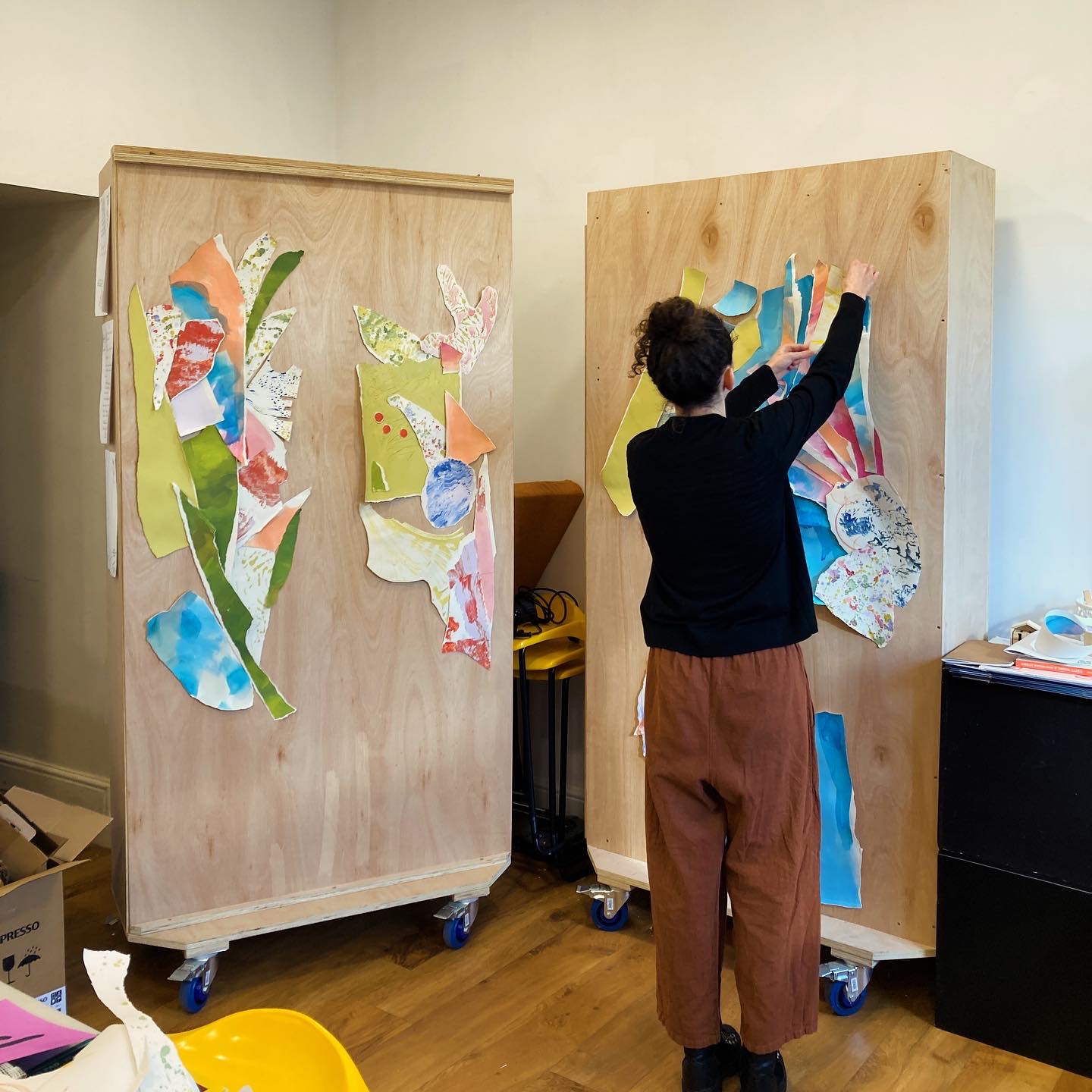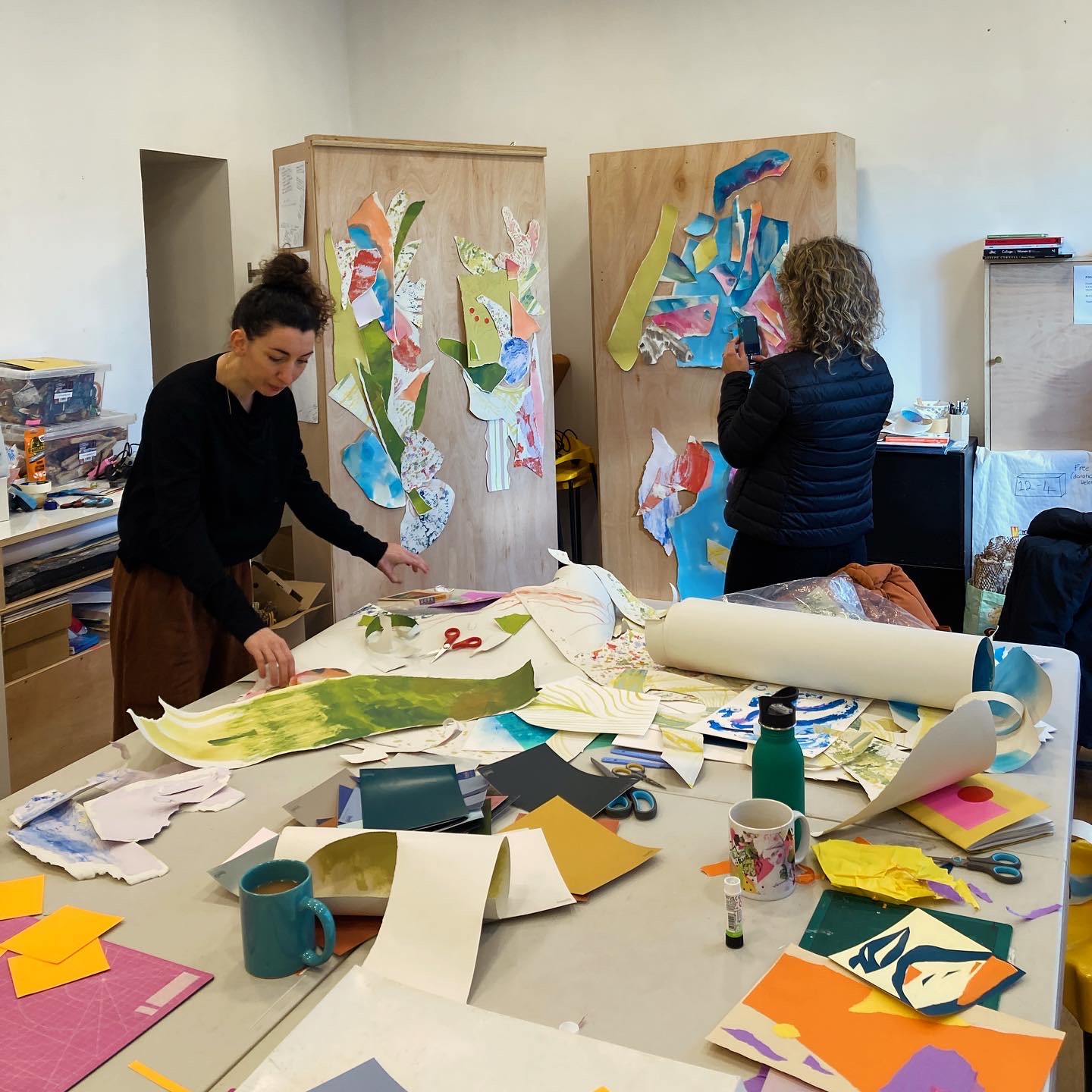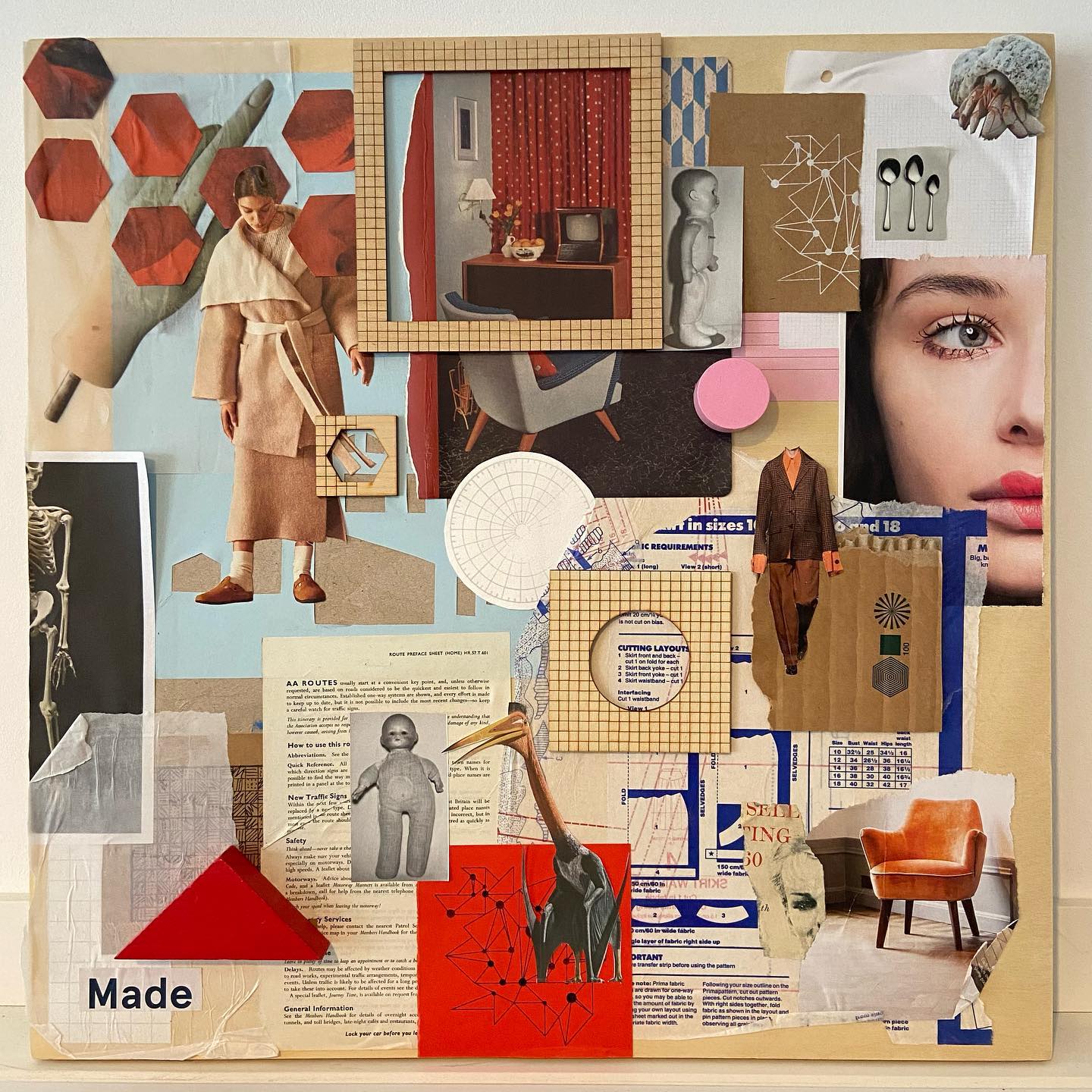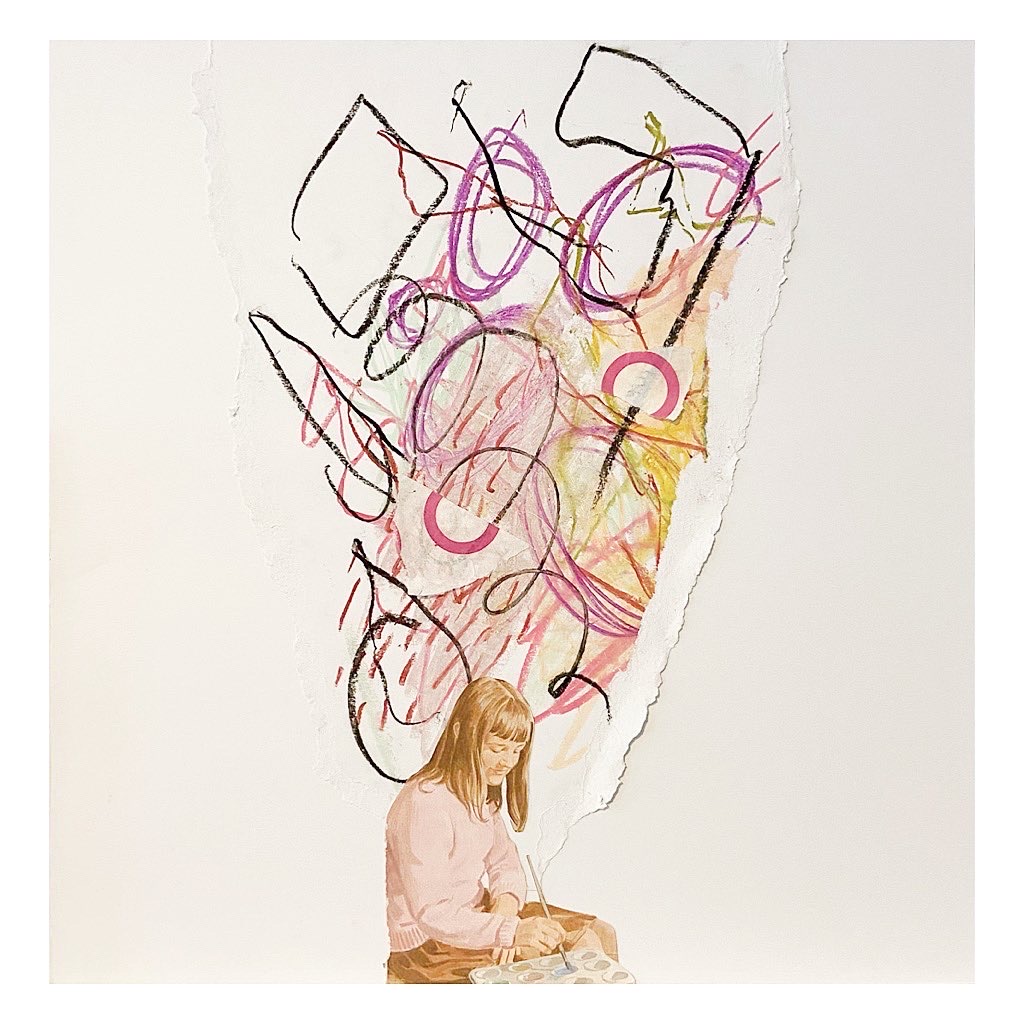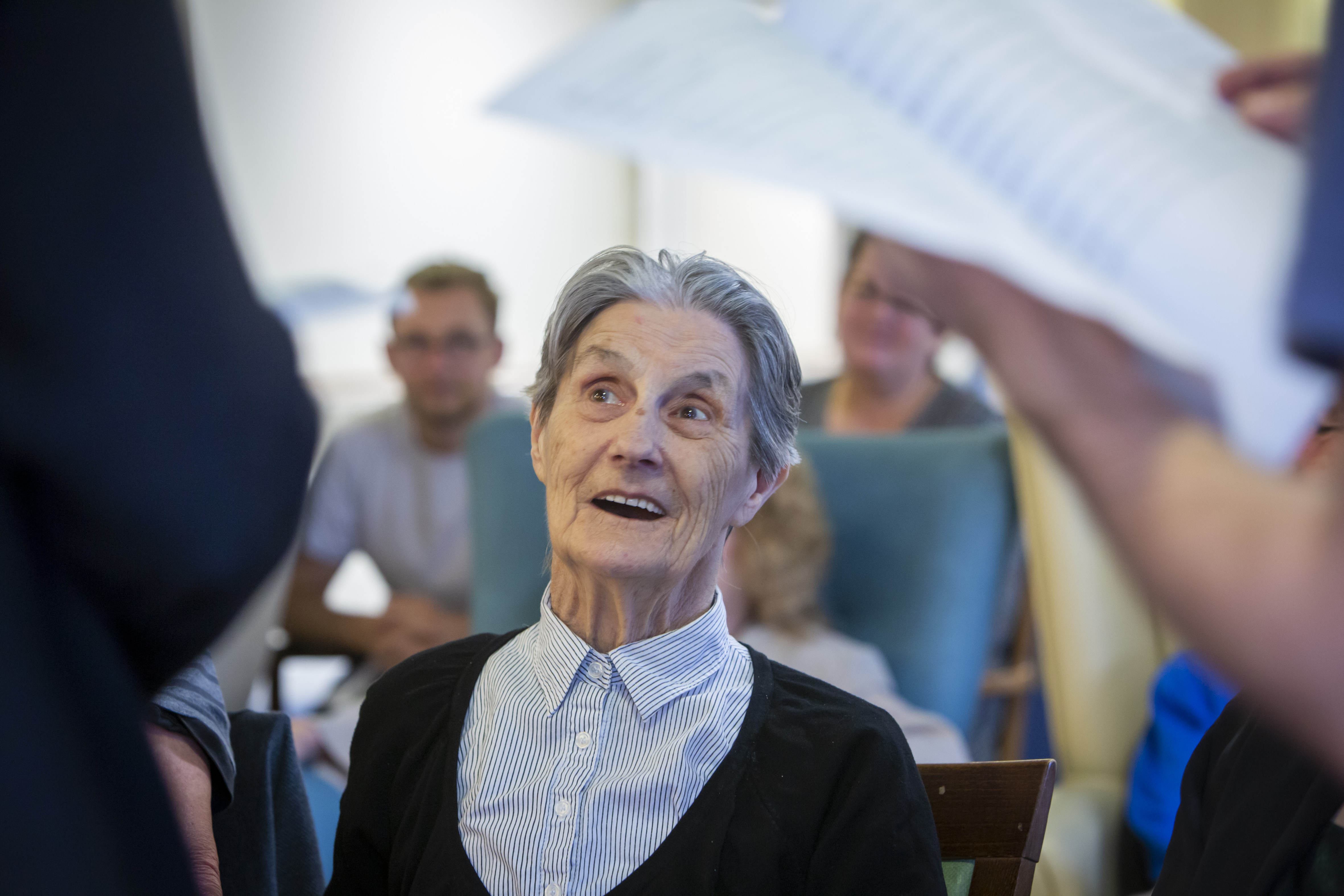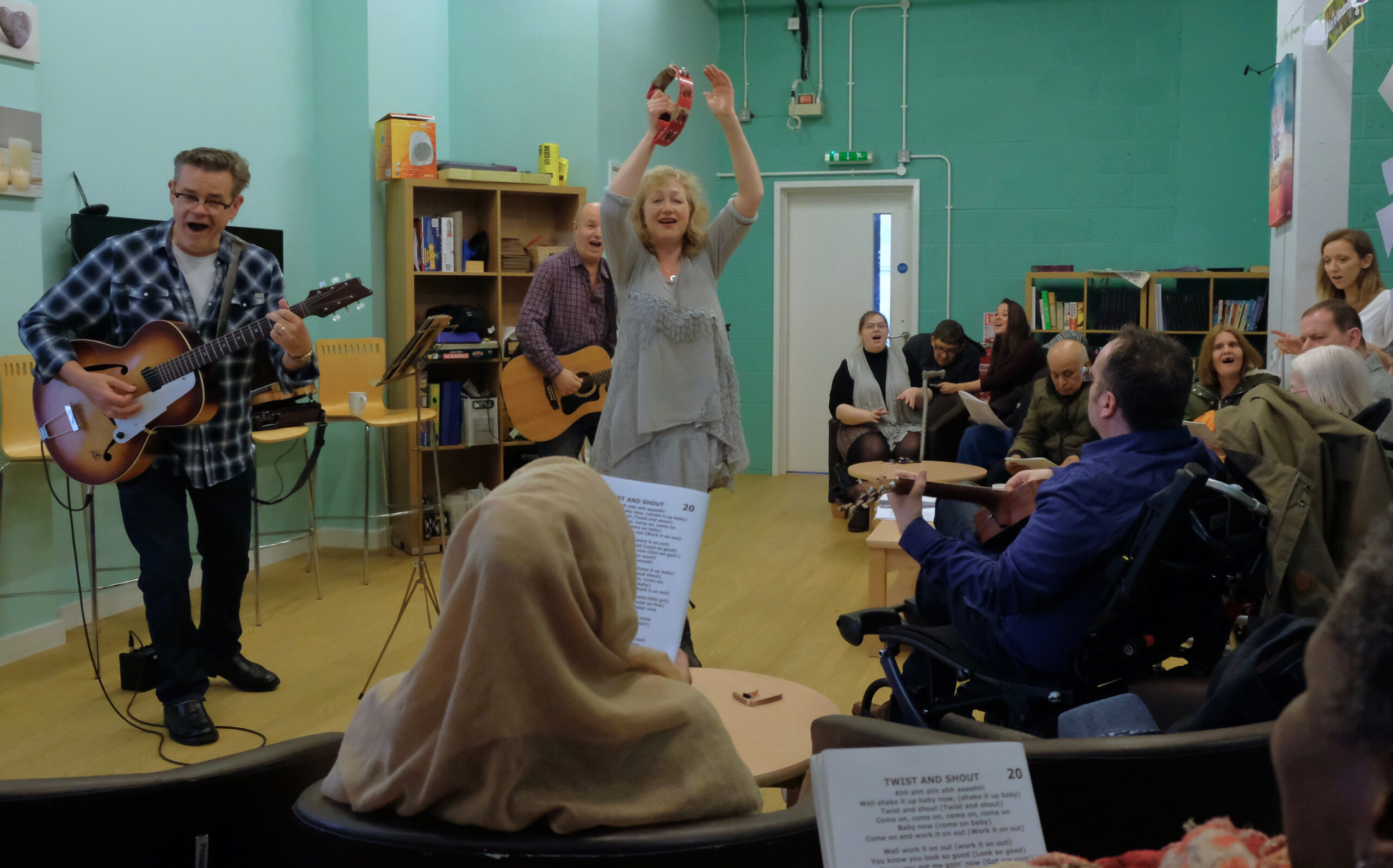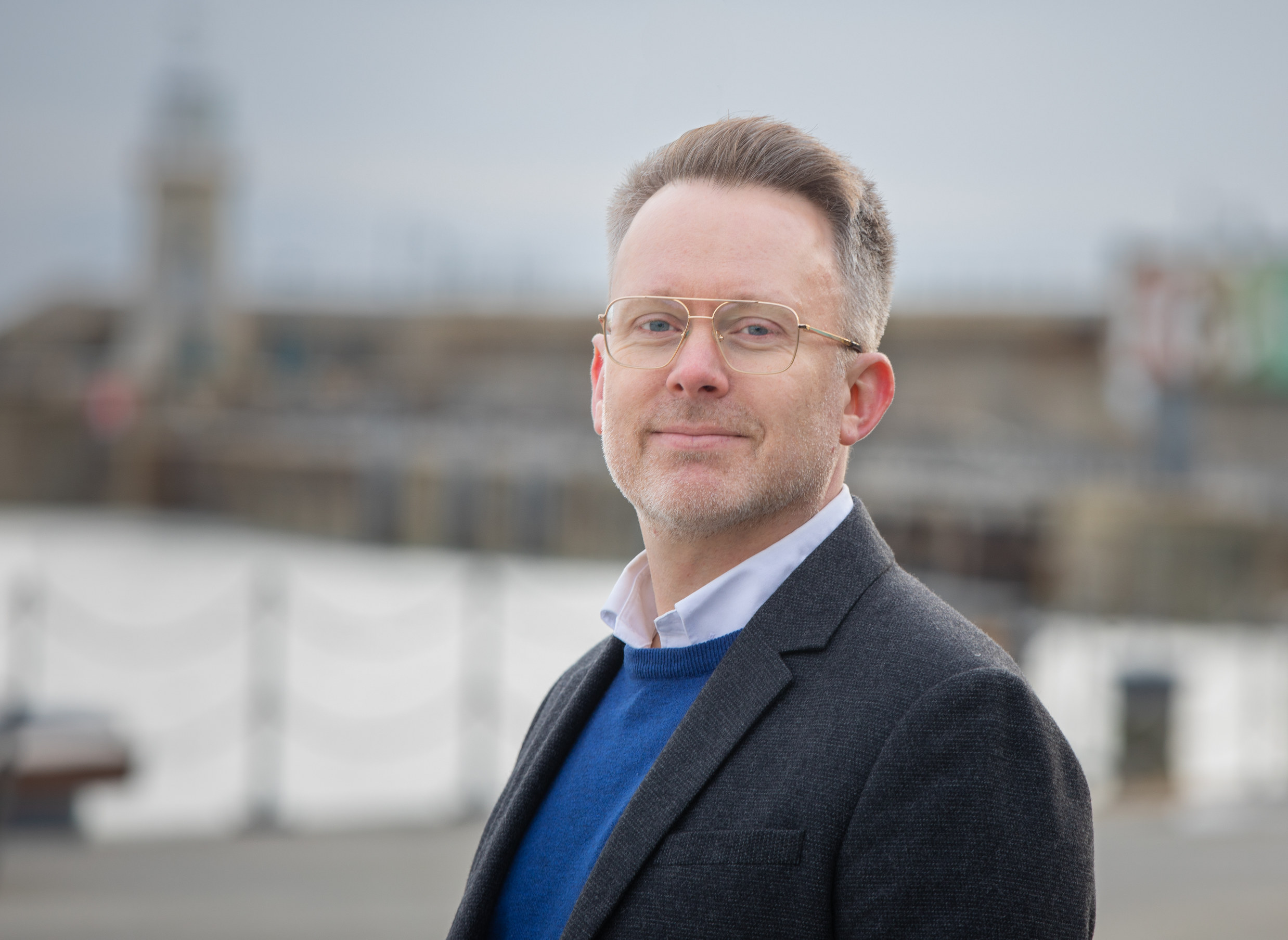Arts & Culture
fourth wall – Creativity, community and mental wellbeing
Sarah Lloyd, formerly Carpenter, founder and director of Fourth Wall Folkestone, began her exploration of art and mental wellbeing after her own experience of mental illness in 2015. It is widely appreciated that art can be used therapeutically, yet Sarah wanted to explore something more with her practice. She started to work with psychiatrists, researchers, clinicians and others to make systemic changes in mental health practice through art. Her work has been collected by the Wellcome Trust. With the involvement of other artists and lawyers, her projects have contributed to changes in legislation and delivery of mental health support. She and her husband moved to Folkestone but a spare room at home wasn’t sufficient as a studio. So Sarah became a Creative Quarter tenant. Folkelife met her at Fourth Wall Folkestone on The Old High Street to learn more.
open dialogue
“Being based at home made me think about my practice and what’s important to me. I was quite used to talking about my work, but being tucked away at home or in my first studio in Folkestone meant I couldn’t do that. I realised that it doesn’t matter if artwork is good or bad, but the process of making it opens up dialogue. So I needed a window. I needed to be able to break that Fourth Wall, as they say in theatre, and reach out to speak to people about what I do.
“Initially my work was associated with the Maudsley Hospital and Bethlem Gallery in London. Now I am in Kent I have reached out to new partners and work a lot with the University of Kent. They have very good public advisory groups and I have become a public involvement advisor in research. This has lead to me being involved with NIHR – the National Institute for Health and Care Research. I now get the chance to bang on about how creative processes open up dialogue to anyone who will listen, across the UK.”
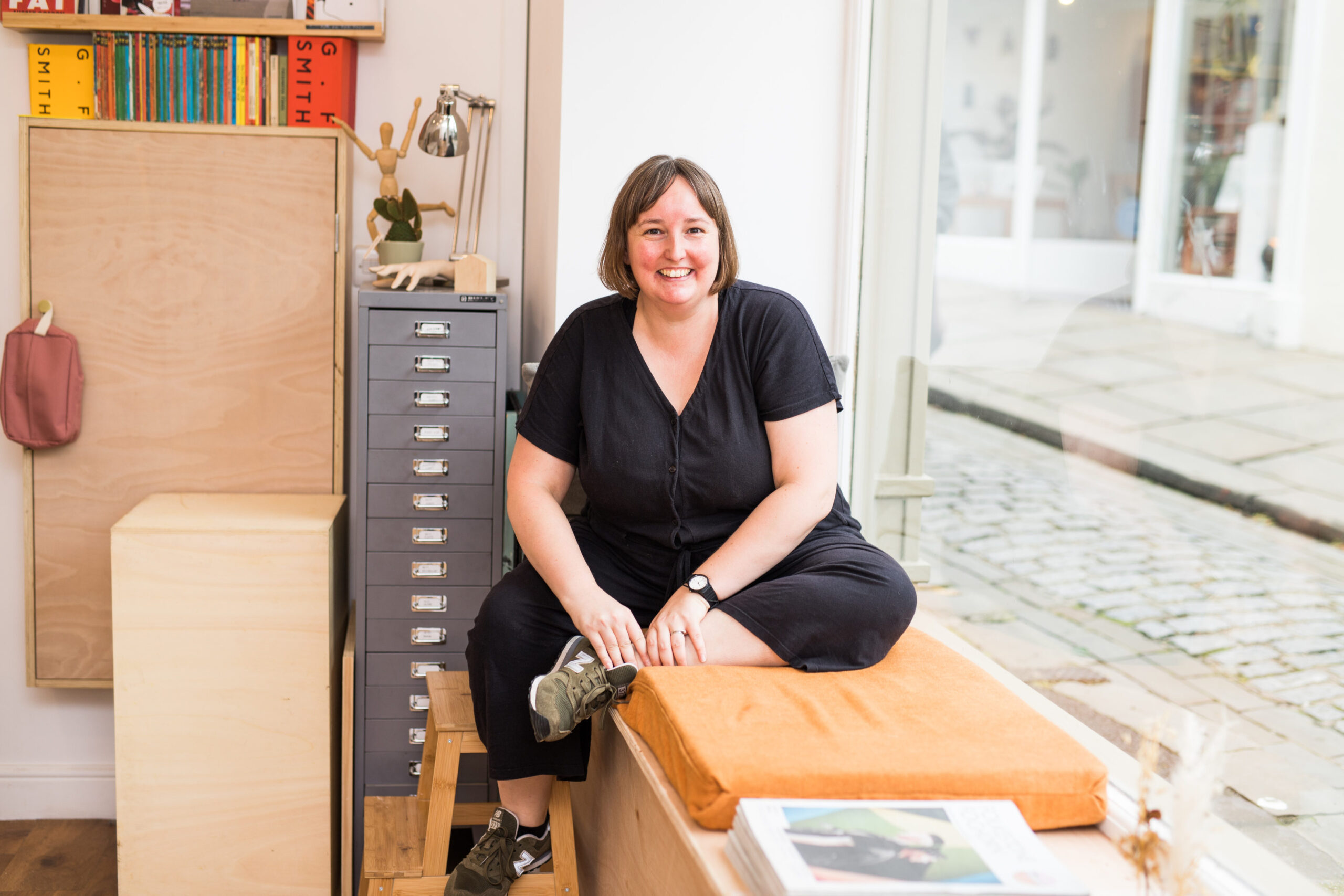
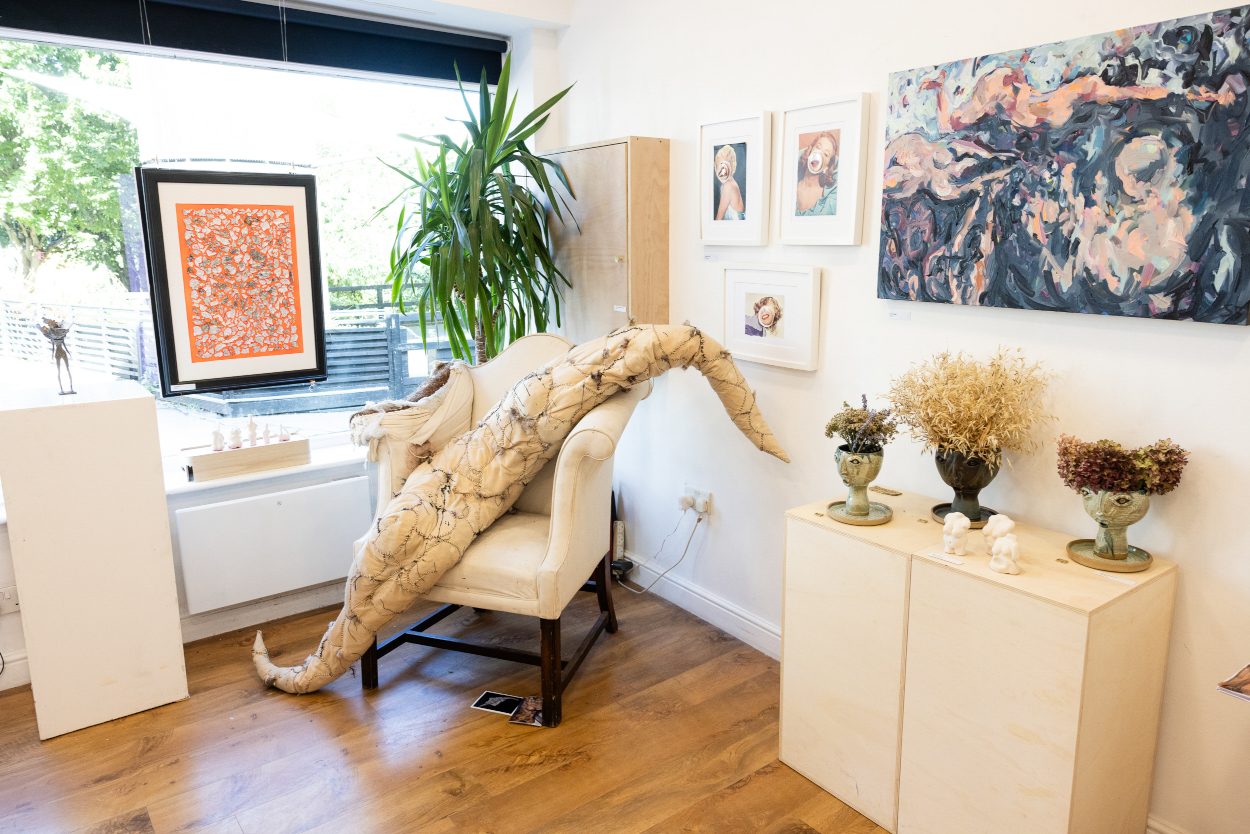
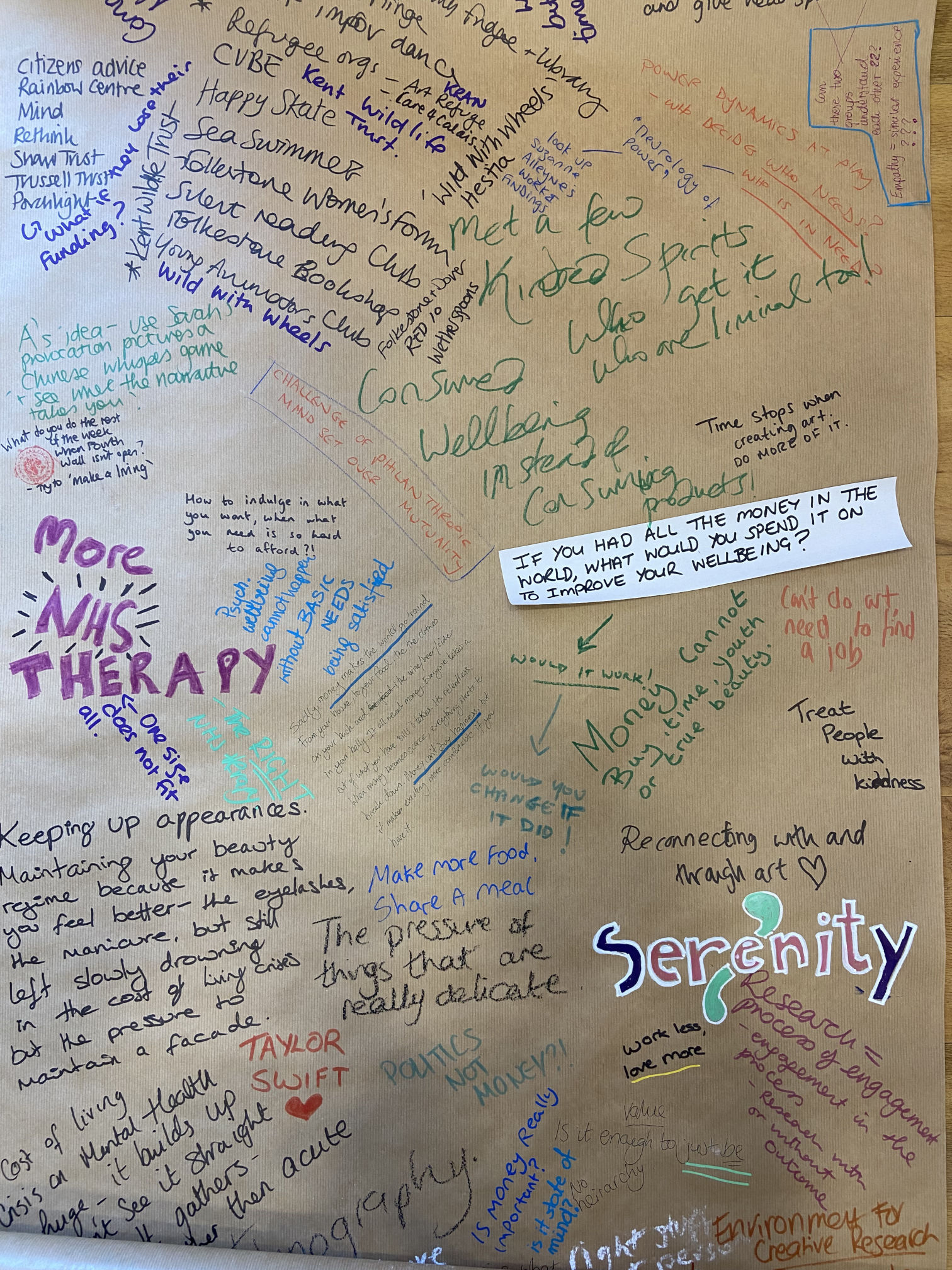
what cost folks?
“Last year we did a project where we were trained by NHS England to be Community Researchers. Our project called ‘What Cost Folks?’ and we were looking at the cost of living and mental wellbeing in Folkestone. We did creative activities which engaged over 1000 people, whereas those who used more traditional methods reached on average 15 people max. It was proof that ours was a good method to use with people who are hard to reach. In 2025, we’re going to be expanding upon this with a different topic – social care. Now, that’s a topic that I don’t have much experience in, so this is a whole new ball game for me.
“I’m not alone though. Many people are not aware of what social care actually is, what care is available, or don’t think they will end up needing to call upon social care. We recently invited Penny who leads a group called ‘Ageing Without Children’ in Hythe to facilitate a discussion around this. She brought up the issue of Power Of Attorney and who has autonomy when an older person can no longer make decisions for themselves. If your children are in Australia, or you don’t have children, who plays that role? At what point do you put those documents in place? What if you do have a child but you don’t have any contact?”
cross-generational discussions
“The Ageing Without Children group has the capacity to help with paperwork and documents, but there’s more to the conversation than that. What about isolation? What about socialisation? Who Cares Folks? Is going to be cross-generational so that this can be an issue we may explore. It’s important for the elderly to be involved in highlighting the problems, but also for the younger generations to know what’s to come in the future, and what’s expected of us now.
“The creativity comes into how you start a conversation about these topics. So with ‘What Cost Folks?’ we did a badge making session; a collage session; we put on an exhibition with artwork from people on the theme of wellbeing and money. There was a session where people could write a prescription for Folkestone and then put it up on the wall. We worked with Touchbase Care and a lot of their imagery was of Sonic the Hedgehog or Pokemons. We held Lego sessions for people to play and create something entirely new, from their own imagination, giving a new outlet for expression.”
our own words
“I think it’s really important to get people to write down what they’re thinking in their own words. There’s a motto I use which comes from the Disability Arts Movement which is ‘Nothing About Us, Without Us.’ The same is true when presenting our ‘What Costs Folks?’ research to the NHS. We invited a member of the public to speak about our project, giving them the platform to be heard. It’s important to put the person at the forefront of everything we do. Our work is leading towards systemic change. Doing a little project here in Folkestone has had an impact on lots of places around the country.
“The other beautiful thing about creative community research projects is you don’t need to wait until the end to see results. There are actions all along the way. Creative methods improve socialising, people feel less isolated just by being involved in our activities. Researchers and academics are interested in our methodology more so than the specifics of our findings. Although each community is different, and has its own way of expressing itself. Our methodology can be applied more widely whether you are in Folkestone or Hull.”
Community trust
“Another finding from our research was that there are so many good things happening in the local area which just need better signposting. People are unaware of what is available. There is often no joined-up approach and, as a result, a lot of repetition. These community groups have built a lot of trust and connections, and that’s who the researchers should be going to. Look at the communities that are already established rather than creating new cohorts. This is also what you do as an artist. Creative thinking leads to innovative ways of opening up dialogue with people. So that’s what I do here – try and react, respond and engage through creative means.”
Photo credits: Mooiefee Photography, Igor Emmerich and Open Art 2024, Fourth Wall Folkestone
